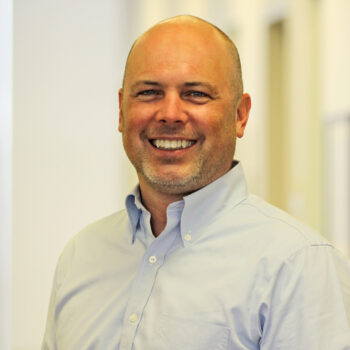For years, every time I’ve traveled outside of Boston, I took a picture and turned it into a postcard to send to my now 97-year-old grandmother, who lives on her own in rural Maine. She replies with a card. We write about things little and big — our shared love of homegrown vegetables to memories of my grandfather.
But recently, COVID-19 broke that pattern. I’m not traveling and she’s quarantined, with just a visit from a family member every few days. We needed a new routine. I called her, but we’re not great on the phone. I sent a gift basket, but she seems to be rationing the treats. I could tell she was sad. So I sent her a picture postcard of the first radishes to sprout in my garden. And she replied with a card that got to the heart of the matter: “Merci beaucoup for all the goodies.…I’m still quarantined. Your mom comes with a mask on. I’m hungry for hugs and kisses. XOXO.”
That trial and error with Grandma got me thinking about the personal and professional ways we’re all experimenting with how we listen and connect in this moment. How can we navigate creating new habits while maintaining the old modes that remain important? After all, listening well right now may not be easy, but it is essential.
I want to share six observations from the past few weeks about how funders can listen well and maintain meaningful feedback loops in this moment. This post builds on a recent piece by Valerie Threlfall, Fay Twersky, and Melinda Tuan of Fund for Shared Insight, as well as a joint-hosted CEP/Council on Foundations webinar I was a part of last week that included perspectives from several funders and a front-line nonprofit. (You can listen to the recording here.)
1. Listen only when you’re willing to act. Listening is not free — neither for the people being listened to nor for the folks doing the asking. ![]()
Recently, someone asked on Twitter whether surveys — like those CEP often conducts — are “extractive listening” at a time when everyone is stretched thin. (More on surveys in a minute.) My answer is clear: any type of listening can be extractive. A 30-minute phone call and a 30-minute survey have similar costs to the respondent. So, the cost-benefit analysis comes down to the benefit part: are you willing to act on what you hear and in ways that actually create real net value for nonprofits? Listening only becomes additive when it turns what is heard into meaningful change for those who gave the time and effort to share. ![]()
2. Listen quickly. I’m grateful for the speed with which many funders have responded to this crisis. This is a time when moving quickly is absolutely crucial.
To help, CEP developed a very short, rapid-response survey to help funders quickly hear how their grantees are being affected right now. The survey questions are available on our website for anyone to use.
In one case, to relieve the burden on grantees, a group of funders in New York that share many overlapping grantees asked CEP to reach out to nonprofits in their region on their behalf. What we heard in the survey responses was striking. At a moment when these nonprofits are facing huge drops in revenue, just under 15 percent of respondents had less than one month of money to keep operating. These organizations were entering this crisis with no financial room to spare and needed support rapidly. (You can read more about the survey’s findings in this Poughkeepsie Journal article.)
The Nonprofit Finance Fund’s “State of the Sector” report confirms that most nonprofits have fewer than three months of cash on hand. If funders aren’t listening right away in this moment, it’s quite possible that important nonprofits will not just struggle, but close up and cease operations entirely. ![]() Funders, if you haven’t heard from every single one of your grantees already, you’re late.
Funders, if you haven’t heard from every single one of your grantees already, you’re late.
3. Listen carefully. I believe that this crisis will only amplify the power imbalance between often perpetually endowed funders and their grantees that often have only a few months of operating runway. When nonprofits face an existential crisis and foundations hold a potential lifeline, the first thing that funders are likely to hear is “thank you.” That “thank you” is heartfelt and real, but if it’s the first and last thing said and heard, funders haven’t listened carefully enough.
Even the most outspoken nonprofits are worried right now. One leader recently told me, “I’m more fearful now than ever, even with the funders I know well. The consequence of saying the wrong thing in this moment is just so huge.” This is reinforced in the CEP research report, Strengthening Grantees: Foundation and Nonprofit Perspectives, which focuses on what nonprofits need to build capacity. One of the study’s findings has never left my mind: when deciding what capacity-building help to ask funders to provide, a significant proportion of nonprofits report that they decided what to ask for not based on what they most needed, but rather based on what they thought a foundation would be willing to fund, or what a foundation directly told them to request.
Funders, do not assume you’ve heard the whole truth the first time you listen! Try to find ways to listen that aren’t just based on directly asking nonprofits what they need (though, of course, that’s also important). Look to research or third parties to help get past the power dynamic. And consider prompting grantees with challenges or scenarios you’ve heard from other nonprofits so that you break the ice on raising what might be uncomfortable truths.
4. Listen differently. Don’t assume that the same approaches or questions that worked a few months ago still apply in the same way now. ![]()
CEP had more than a thousand Grantee Perception Report (GPR) surveys in the field in early March when the World Health Organization officially declared COVID-19 a pandemic. When we looked across survey responses that nonprofit leaders started before and after that point, we did not see differences. These funders, in general, were viewed as just as responsive, clear, and impactful.
But the story is different when we looked at responses for individual funders. For some specific foundations, we saw big differences in the before-COVID and after-COVID surveys, often on questions about how well those funders understood the respondents’ fields, their challenges, and their beneficiaries’ needs. Some were viewed more positively and some less, suggesting that some funders are adjusting more successfully than others to the way they listen and create understanding in this moment.
So, funders, make sure that the listening you do is focused on re-checking assumptions and generating deep understanding of grantees’ and beneficiaries’ needs right now.
5. Listen comprehensively. Comprehensive approaches to listening — such as surveys — do several important things:
- They generate more candor. If done in partnership with a third party, comprehensive surveys can allow nonprofits to be more authentic in their responses. Research is clear that unpopular opinions or difficult messages are shared least face-to-face, less over the phone, and more frequently through methods like surveys that leave the respondent unseen or unnamed.
- They create equity. Louder voices or more expressive stories are given the same weight as others in a comprehensive approach. If you’re not careful about hearing from everyone, you’re at risk of reinforcing the conscious and unconscious biases we all have about who gets heard.
 You may very possibly hear only those whose voices are already heard; whose organizations are best resourced; or whose leaders are the most confident, extroverted, or experienced.
You may very possibly hear only those whose voices are already heard; whose organizations are best resourced; or whose leaders are the most confident, extroverted, or experienced. - They reveal inequity. Combined with careful analysis (for example, disaggregation based on organizations led by or working with historically marginalized communities), only comprehensive listening can reveal the potentially disproportionate ways that funders’ approaches privilege or penalize certain groups.

I’m not suggesting all listening needs to be comprehensive. Time is precious all around. So, when funders can rely on existing research or join together to ask questions of shared grantees just once, of course that’s a good thing. Nor am I suggesting that surveys can substitute for the context, empathy, and solidarity that a good conversation can generate — those conversations are essential, too.
But, funders, make a plan to listen comprehensively. Whether through a survey or another method, create a mechanism to track who you’ve listened to, ensure your listening practices have equity in mind, and collect what you’ve heard in a systematic way to make sense of the larger patterns in what was shared.
6. Finally, let’s be honest: listening alone isn’t enough. Nonprofits need resources right now. ![]()
In CEP’s five-minute surveys I mentioned earlier, we ask the simple question: “How can your funders best support your organization and those you serve in the coming weeks and months?” In the responses from nonprofit leaders across multiple surveys for different funders in different regions, do you know how many times the word “listen” was mentioned? ZERO. Rather, in answer after answer, we saw things like “funding,” “resources,” and “general operating support.”
As one nonprofit leader wrote:
“I can best be supported by financial assurance that my expenses can still be covered. We have been a high-quality, award-recognized center in my community for almost 30 years and have never been in need of major financial funding other than [our earned revenue]. This is a scary place for me to be after 30 years of success. I have always known that hard work, perseverance, integrity, and honesty would keep us operating at our highest level…only to find out that in times like now, it isn’t enough. We may lose all that we have worked for and have to close an organization I KNOW the community will need when [we all can] get back to work.”
Listening is essential for philanthropic funders to know who and how to help right now. And it’s only the first step. This is a moment when funders can listen to their own hearts and dig deep to help support the nonprofits around the world whose work has supported so much progress — and whose efforts will be needed just as much in six months, a year, or whenever this crisis starts to recede.
Kevin Bolduc is vice president, assessment and advisory services, at CEP. He has spent the greater part of two decades working to help break down the inherent power imbalance between funders and grantees and develop feedback loops that allow philanthropic organizations to hear from nonprofits in ways that are authentic, meaningful, and generate change for the better. Follow him on Twitter at @kmbolduc.




